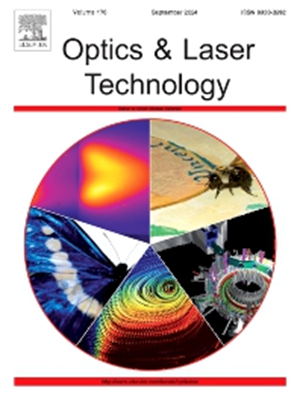Efficient interpolation-based and terrain-adaptive hierarchical filter for ultra-large-scale point cloud over complex landscapes
IF 4.6
2区 物理与天体物理
Q1 OPTICS
引用次数: 0
Abstract
Complex landscapes, typically characterized by outliers, objects with diverse structures, vegetation on steep slopes, and terrain discontinuities, pose significant challenges to traditional filtering methods, especially when processing ultra-large-scale point clouds. To address these challenges, this paper proposes an efficient interpolation-based and terrain-adaptive hierarchical filtering method. Specifically, a hybrid algorithm combining a moving-window detector with robust surface fitting is developed to optimize the selection of initial ground seeds. Subsequently, a weighted finite-difference-based Thin Plate Spline (TPS) method is introduced to generate reference ground surfaces, thereby improving computational efficiency and mitigating the impact of misclassified object points. Finally, a terrain-adaptive filtering threshold incorporating different orders of terrain roughness is designed to accurately extract ground points near terrain discontinuities. To evaluate the proposed method, extensive experiments were conducted on the ISPRS benchmark samples and the ultra-large-scale OpenGF dataset. Results demonstrate that our method achieves an average Kappa coefficient of 92.3% across all 15 ISPRS samples, outperforming 24 state-of-the-art filtering methods published since 2010. On the OpenGF dataset, the proposed method surpasses five classical filters, reducing the average total error by 34.1%–77.4% and improving the average Kappa coefficient by 2.8%–21.7%. Overall, this framework provides a robust solution for filtering ultra-large-scale point clouds in complex landscapes.
求助全文
约1分钟内获得全文
求助全文
来源期刊
CiteScore
8.50
自引率
10.00%
发文量
1060
审稿时长
3.4 months
期刊介绍:
Optics & Laser Technology aims to provide a vehicle for the publication of a broad range of high quality research and review papers in those fields of scientific and engineering research appertaining to the development and application of the technology of optics and lasers. Papers describing original work in these areas are submitted to rigorous refereeing prior to acceptance for publication.
The scope of Optics & Laser Technology encompasses, but is not restricted to, the following areas:
•development in all types of lasers
•developments in optoelectronic devices and photonics
•developments in new photonics and optical concepts
•developments in conventional optics, optical instruments and components
•techniques of optical metrology, including interferometry and optical fibre sensors
•LIDAR and other non-contact optical measurement techniques, including optical methods in heat and fluid flow
•applications of lasers to materials processing, optical NDT display (including holography) and optical communication
•research and development in the field of laser safety including studies of hazards resulting from the applications of lasers (laser safety, hazards of laser fume)
•developments in optical computing and optical information processing
•developments in new optical materials
•developments in new optical characterization methods and techniques
•developments in quantum optics
•developments in light assisted micro and nanofabrication methods and techniques
•developments in nanophotonics and biophotonics
•developments in imaging processing and systems

 求助内容:
求助内容: 应助结果提醒方式:
应助结果提醒方式:


